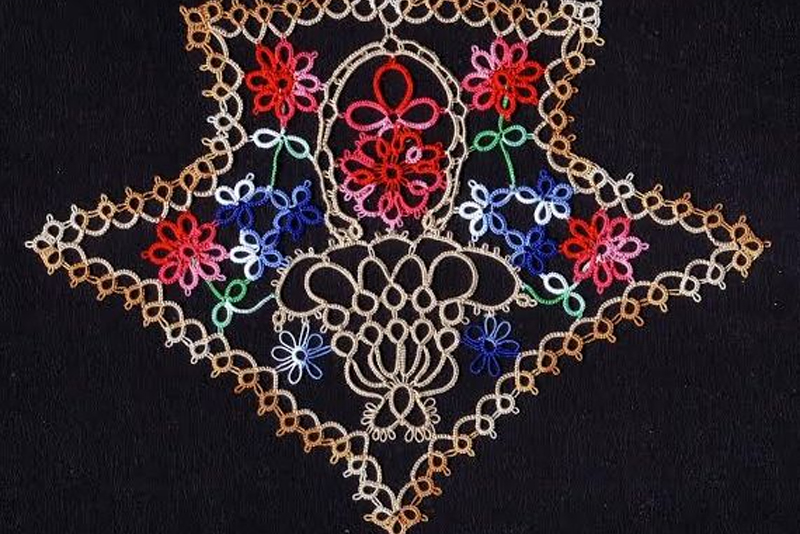
As with her previous two books, the tutorial pages really shine in Tomoko's new book. The diagrams are well marked and they provides a lot of extra information

The very basics of tatting begins the four teaching sections. The lace pieces are presented in full color as are the diagrams. Each additional technique is introduced with a small pattern and all the tutorials photos and diagrams needed to tat it.
The double stitch count is given on the diagram which also shows the starting point and the direction of work is marked with an arrow. And where needed the order in which the rings are tatted is marked with a number in the center of the rings. With such well-prepared diagrams as these, the actual language of the book does not matter because we all speak "tatting."

But the very best part of the book begins in the back, pages 84 - 109. Tomoko names this section "World Tatting." It begins with a layout of familiar tatting tools, shuttles, and cluny loom. Then it showcases Celtic tatting showing Ruth Perry's "Celtic Tatting" book. That is followed by a presentation of Japanese Needle Tatting by Mrs. Takashima and her four books. Regular needle tatting is shown next with a great collar shawl in ice blue perfect for a nighttime occasion.
Mekik Oya is shown in several photos encouraging us to combine tatting and Oya. And a photo layout demonstrates the use of the flat bendable plastic cluny loom recently released by Handy Hands Tatting (hhtatting.com.) The traditional method of forming the cluny loom on one's hand has the starting point of the cluny tally or leaf held securely with a metal clamp.
The book finishes with some suggested projects on which to display your tatting. Construction methods for larger pieces are highlighted on page 106. For dainty tatted squares are joined together in a design that creates what would have been 4 negative spaces. But the outer row from each square joins across to its neighbor with a design which does create 8 smaller open spaces. A true open space is situated in the center of the piece. It is a terrific and exciting design.
Her two previous books.


Here's the latest article from the Tatting site at BellaOnline.com.
Onion Ring Motif Vintage This is an interesting exercise in diagramming and writing patterns. An antique German tatting book which has only photos no text, "Die Schiffchenarbeit" offers a challenge. This pattern uses the onion ring tatting elements so often found in antique patterns.
http://www.bellaonline.com/articles/art305512.asp
Please visit tatting.bellaonline.com for even more great content about Tatting. To participate in free, fun online discussions, this site has a community forum all about Tatting located here -
http://forums.bellaonline.com/ubbthreads.php?ubb=postlist&Board=39
I hope to hear from you sometime soon, either in the forum or in response to this email message. I thrive on your feedback! Have fun passing this message along to family and friends, because we all love free knowledge!
Georgia Seitz, Tatting Editor http://tatting.bellaonline.com One of the hundreds of sites at BellaOnline.com







